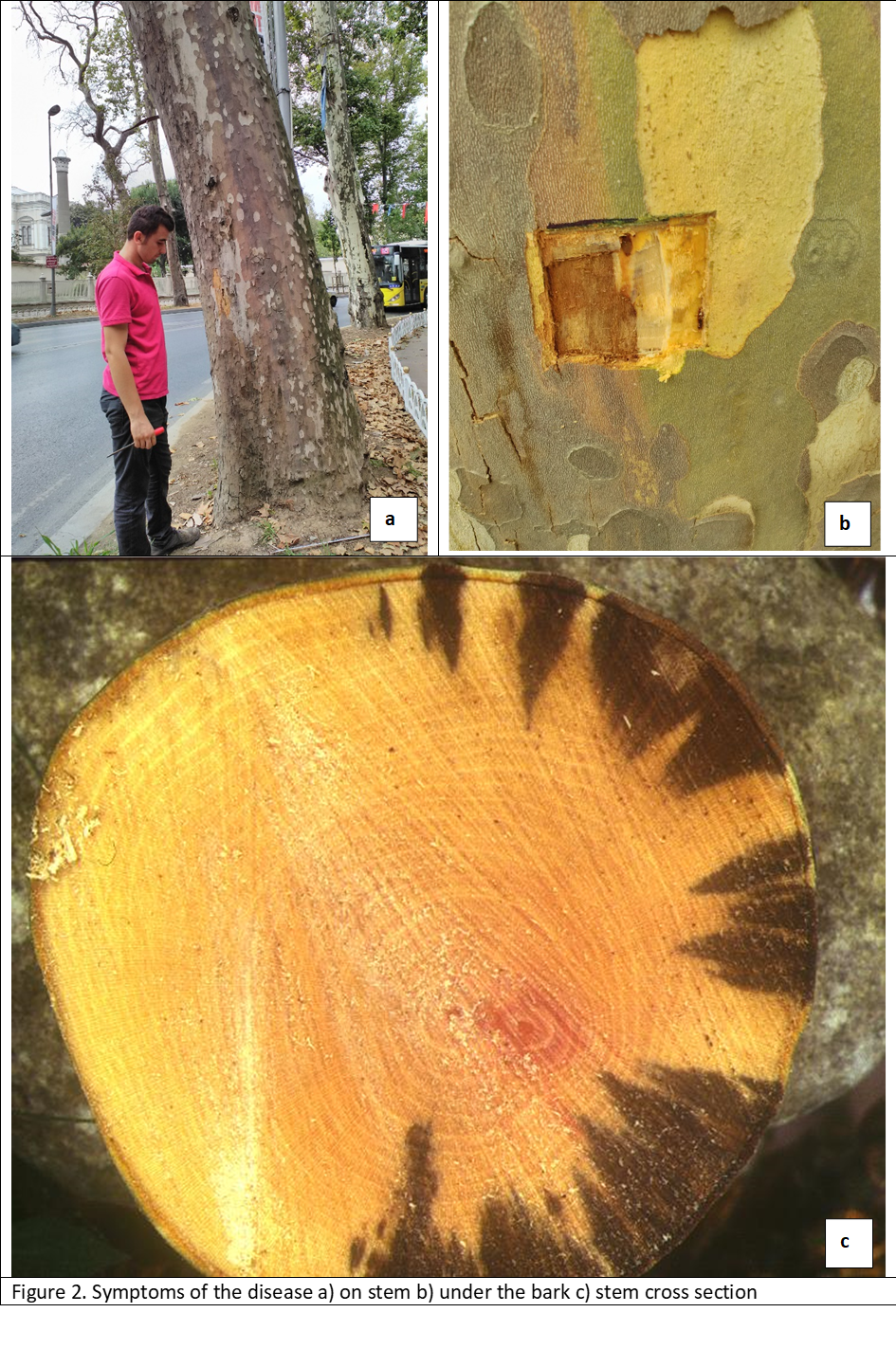Section outline
-
Ceratocystis platani can be baited from infected wood or frass within 48 h by placing colonized tissues in moist chambers or on pieces of autoclaved carrot in Petri dishes at 20 - 25°C and incubation for 24-48 hours, when asexual spores are visible; after approximately 7 days, ascomata form (Vigouroux, 1979b; Ocasio-Morales et al., 2007). In culture, the fungus grows well on both malt extract agar or potato dextrose agar. A trap/bait technique (Grosclaude et al., 1988) is effective in isolating the pathogen from soil or infected wood: the bark is removed from healthy twigs or branches of Platanus orientalis or P. x hispanica before placing in close contact with the wood or soil sample and incubating in a humid chamber or in water at room temperature. Perithecia become visible on the exposed sapwood of branches within a few days. A similar technique can detect C. platani in river water.
Molecular methods are available for the specific detection and identification of C. platani without a requirement for isolation. A quantitative PCR technique (Pilotti et al., 2012; Luchi et al., 2013) detected C. platani DNA in low quantities and with high precision from sample traps placed in the vicinity of infected trees in Italy. Ceratocystis platani DNA was detected as far as 200 m from trees felled for sanitation purposes in Firenze, using real-time PCR (Luchi et al., 2013). These methods are useful in monitoring the spread of the disease in a region.
An EPPO Diagnostic Protocol for C. platani provides recommendations for the detection and identification of the pathogen in plant material, soil or water samples (EPPO Standard PM 7/14, 2014).
